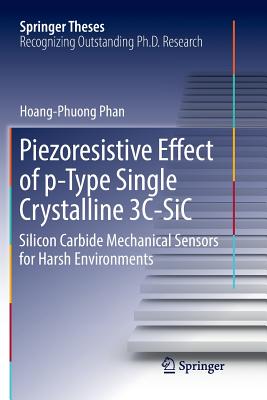Microsystem Design (Hardcover)
暫譯: 微系統設計 (精裝版)
Stephen D. Senturia
- 出版商: Kluwer Academic Publ
- 出版日期: 2000-11-30
- 售價: $6,490
- 貴賓價: 9.5 折 $6,166
- 語言: 英文
- 頁數: 689
- 裝訂: Hardcover
- ISBN: 0792372468
- ISBN-13: 9780792372462
-
相關分類:
微電子學 Microelectronics
海外代購書籍(需單獨結帳)
買這商品的人也買了...
-
 計算機組織與設計--軟硬體界面第二版 (Computer Organization & Design, 2/e)
計算機組織與設計--軟硬體界面第二版 (Computer Organization & Design, 2/e)$680$537 -
 XML 程式設計藝術 (XML How to Program)
XML 程式設計藝術 (XML How to Program)$950$855 -
 Web 好色-網頁色彩學
Web 好色-網頁色彩學$420$328 -
 Red Hat Linux 9 實務應用
Red Hat Linux 9 實務應用$650$553 -
 Dreamweaver MX 互動網站百寶箱 for ASP
Dreamweaver MX 互動網站百寶箱 for ASP$580$493 -
 ASP.NET 程式設計徹底研究
ASP.NET 程式設計徹底研究$590$466 -
 STRUTS 實作手冊(Struts in Action: Building Web Applications with the Leading Java Framework)
STRUTS 實作手冊(Struts in Action: Building Web Applications with the Leading Java Framework)$690$538 -
 重構─改善既有程式的設計
重構─改善既有程式的設計$720$569 -
 XOOPS2 網站架設與管理
XOOPS2 網站架設與管理$590$502 -
 詳解 JavaScript & HTML & CSS 語法辭典
詳解 JavaScript & HTML & CSS 語法辭典$490$382 -
 Linux 防火牆:iptables
Linux 防火牆:iptables$450$356 -
 JSP 動態網頁入門實務
JSP 動態網頁入門實務$720$569 -
 SCWCD 認證專家應考指南
SCWCD 認證專家應考指南$780$663 -
 Linux 驅動程式 (Linux Device Drivers, 2/e)
Linux 驅動程式 (Linux Device Drivers, 2/e)$880$695 -
 ANSYS 進階
ANSYS 進階$625$563 -
 C++ Primer, 4/e (中文版)
C++ Primer, 4/e (中文版)$990$891 -
 ANSYS 入門 (修訂四版)
ANSYS 入門 (修訂四版)$690$621 -
 Google Android SDK 開發範例大全 2
Google Android SDK 開發範例大全 2$890$703 -
 深入淺出 Android 系統原理及開發要點
深入淺出 Android 系統原理及開發要點$450$351 -
 接案我最行!JavaScript & Ajax 商業範例必殺技
接案我最行!JavaScript & Ajax 商業範例必殺技$480$408 -
 松本行弘的程式世界:成為一流程式設計師的 14 種思考術
松本行弘的程式世界:成為一流程式設計師的 14 種思考術$590$460 -
 Visual C# 2012 資料庫程式設計暨進銷存系統實作
Visual C# 2012 資料庫程式設計暨進銷存系統實作$650$514 -
 LinkIt ONE 物聯網實作入門
LinkIt ONE 物聯網實作入門$280$252 -
 Python 初學特訓班 (附250分鐘影音教學/範例程式)
Python 初學特訓班 (附250分鐘影音教學/範例程式)$480$379 -
 Halliday & Resnick`s Principles of Physics, Extended, 12/e (IA)(Paperback) (書況有些許瑕疵,不介意在下單)
Halliday & Resnick`s Principles of Physics, Extended, 12/e (IA)(Paperback) (書況有些許瑕疵,不介意在下單)$1,640$1,607
相關主題
商品描述
The goal of this book is to bring together into one accessible text the fundamentals of the many disciplines needed by today's engineer working in the field of microelectromechanical systems (MEMS).
The subject matter is wide-ranging: microfabrication, mechanics, heat flow, electronics, noise, and dynamics of systems, with and without feedback. Because it is very difficult to enunciate principles of `good design' in the abstract, the book is organized around a set of Case Studies that are based on real products, or, where appropriately well-documented products could not be found, on thoroughly published prototype work.
The Case Studies were selected to sample a multidimensional space: different manufacturing and fabrication methods, different device applications, and different physical effects used for transduction. The Case Study subjects are: the design and packaging of a piezoresistive pressure sensor, a capacitively-sensed accelerometer, a quartz piezoelectrically-driven and sensed rate gyroscope, two electrostatically-actuated optical projection displays, two microsystems for the amplification of DNA, and a catalytic sensor for combustible gases.
This book is used for a graduate course in `Design and Fabrication of Microelectromechanical Devices (MEMS)' at the Massachusetts Institute of Technology. It is appropriate for textbook use by senior/graduate courses in MEMS, and will be a useful reference for the active MEMS professional.
Each chapter is supplemented with homework problems and suggested related reading. In addition, the book is supported by a web site that will include additional homework exercises, suggested design problems and related teaching materials, and software used in the textbook examples and homework problems.
Contents
Foreword. Preface. Acknowledgments. Part I: Getting Started. 1. Introduction. 2. An Approach to MEMS Design. 3. Microfabrication. 4. Process Integration. Part II: Modeling Strategies. 5. Lumped Modeling. 6. Energy-Conserving Transducers. 7. Dynamics. Part III: Domain-Specific Details. 8. Elasticity. 9. Structures. 10. Energy Methods. 11. Dissipation and the Thermal Energy Domain. 12. Lumped Modeling of Dissipative Processes. 13. Fluids. Part IV: Circuit and System Issues. 14. Electronics. 15. Feedback Systems. 16. Noise. Part V: Case Studies. 17. Packaging. 18. A Piezoresistive Pressure Sensor. 19. A Capacitive Accelerometer. 20. Electrostatic Projection Displays. 21. A Piezoelectric Rate Gyroscope. 22. DNA Amplification. 23. A Microbridge Gas Sensor. Appendices: A. Glossary of Notation. B. Electromagnetic Fields. C. Elastic Constants in Cubic Material. References. Ind
商品描述(中文翻譯)
這本書的目標是將當今在微機電系統(MEMS)領域工作的工程師所需的多個學科的基本原理整合成一本易於理解的文本。
內容範圍廣泛:微製造、力學、熱流、電子學、噪音以及系統的動力學,無論是否有反饋。由於在抽象層面上很難清楚地表述「良好設計」的原則,因此本書圍繞一組基於真實產品的案例研究進行組織,或者在適當的情況下,基於充分發表的原型工作。
案例研究的選擇旨在涵蓋多維空間:不同的製造和加工方法、不同的設備應用以及用於轉換的不同物理效應。案例研究的主題包括:壓電電阻式壓力傳感器的設計與封裝、一個電容式加速度計、一個石英壓電驅動和感測的速率陀螺儀、兩個靜電驅動的光學投影顯示器、兩個用於DNA擴增的微系統,以及一個可燃氣體的催化傳感器。
這本書用於麻省理工學院的「微機電裝置(MEMS)的設計與製造」研究生課程。適合用作MEMS的高年級/研究生課程的教科書,並將成為活躍的MEMS專業人士的有用參考資料。
每章節都附有作業題目和建議的相關閱讀。此外,本書還有一個網站,將包括額外的作業練習、建議的設計問題和相關的教學材料,以及在教科書範例和作業問題中使用的軟體。
目錄
前言。序言。致謝。 第一部分:入門。 1. 介紹。 2. MEMS設計的方法。 3. 微製造。 4. 流程整合。 第二部分:建模策略。 5. 集中建模。 6. 能量守恆轉換器。 7. 動力學。 第三部分:特定領域的細節。 8. 彈性。 9. 結構。 10. 能量方法。 11. 耗散與熱能領域。 12. 耗散過程的集中建模。 13. 流體。 第四部分:電路與系統問題。 14. 電子學。 15. 反饋系統。 16. 噪音。 第五部分:案例研究。 17. 封裝。 18. 壓電電阻式壓力傳感器。 19. 電容式加速度計。 20. 靜電投影顯示器。 21. 壓電速率陀螺儀。 22. DNA擴增。 23. 微橋氣體傳感器。 附錄:A. 符號詞彙表。 B. 電磁場。 C. 立方材料的彈性常數。 參考文獻。











